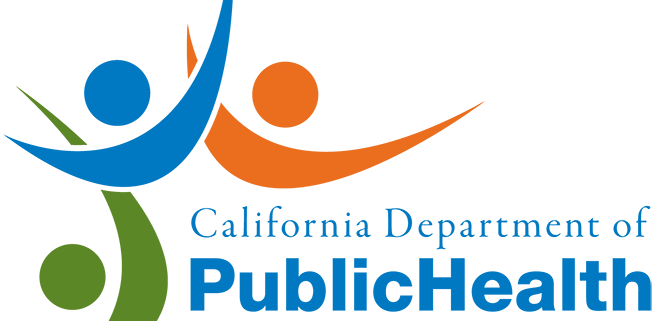
Florida Governor Ron DeSantis speaking at the 2021 Student Action Summit hosted by Turning Point USA at the Tampa Convention Center, July 18, 2021. (Photo: Gage Skidmore)
Florida Bests California Again – This Time in COVID Outcomes
California and other states that imposed more severe regimens ‘didn’t gain anything’
By Thomas Buckley, February 14, 2023 4:58 pm
A new study from the Paragon Health Institute shows that Florida’s more open approach to the pandemic resulted in far fewer societal, educational, and economic disruptions than California’s draconian response while yielding approximately identical health outcomes.
In fact, the study notes, while people fled California at an increasing rate during the pandemic, Florida saw significant population gains.
“More severe government measures did not improve health outcomes but led to worse economic and educational outcomes” said Paragon’s Dr. Joel M. Zinberg. “In addition, people voted with their feet. There was a significant correlation between the severity of states’ government measures and states’ migration outflows. California, which had the third most severe government measures in the nation, experienced a surge in its already high out-migration during the pandemic.”
Not only did stricter states see no marked difference in COVID mortality, they may have caused other health problems.
“States with severe government interventions did not significantly improve health outcomes (age-adjusted and pre-existing-condition adjusted COVID mortality and all-cause excess mortality) compared to states with more restrained approaches,” the report states. “This may be partly because government interventions appear to have increased excess mortality from non-COVID health conditions.”
As to the other impacts – social, economic, and educational – the report notes that “(S)evere government interventions were strongly correlated with worse economic (increased unemployment and decreased GDP) and educational (fewer days of in-person schooling) outcomes. The economic and education damage was most severe for lower-income families and children.”
The Paragon report used the “COVID-19 Government Response Tracker” created at Oxford University to compare all 50 states. The tracker, which is used internationally as a standard measurement – gathers and ranks a number of different factors across various COVID-related impacts.
Throughout the country, states responded differently to the pandemic. However, the report clearly shows that states colloquially known as “red” performed far better during and after the pandemic, while “bluer” states like California and New York saw the most socio-economic problems without noticeably preventing additional death and illness.
Governors Gavin Newsom and Ron DeSantis have been engaged in a public battle over which state did the best by their residents during the pandemic. Newsom has said that if California followed Florida’s lead, there would be “40,000 more Californians dead,” while DeSantis has said “(A)cross the nation we see students denied an education due to reckless, politically motivated school closures, workers denied employment due to heavy-handed mandates and Americans denied freedoms due to a coercive biomedical apparatus.”
Both Newsom and DeSantis have been highly critical of one another and both are seriously considering runs for the presidency, though whether or not they will occur in 2024 or 2028 is not yet known, as the Globe has reported.
For additional comparison, though the most significant aspects of the pandemic response such as compulsory masking, closed schools, etc. have already petered out in California, Newsom’s “State of Emergency” still remains in force until Feb. 28.
In Florida, the state of emergency ended 21 months ago, with most of the actual lockdown/closure strictures – like dining in restaurants, going to school, etc. – lifted well before that.
While the health impact was the same, the economic and social issues were far different. Florida had the eighth lowest Oxford rating in the nation, while California had the third highest (only New York and Hawaii – for obvious reasons – were rated to have more restrictive pandemic responses.)
The report states that:
- The two states had roughly equal health outcomes scores, suggesting little, if any, health benefit from California’s severe approach.
- California suffered far worse economic and education outcomes than Florida, which scored well above average on each.
- California’s severe lockdowns seemed to elicit a jump in its already high out-migration, while Florida experienced a significant in-migration increase during the pandemic as compared with pre-pandemic trends.
It should also be noted that while California ended the pandemic with a nearly $20 billion dollar debt to the federal government to cover unemployment benefits, Florida’s unemployment insurance trust fund actually earned money for the state. In another example of the difference, Disney World was closed for about four months while California’s Disneyland stayed shuttered for more than a year.
The report also raises serious questions about exactly why the pandemic triggered the mass lockdowns in the first place. Pandemic plans had been created by various government agencies – including the federal CDC – years ago and those plans did not generally call for prolonged lockdowns and such. In fact, many of the plans were very similar to the measures taken in Sweden, which showed no appreciable health outcome difference while avoiding the social, economic, and cultural harms caused by harsh measures taken elsewhere.
Those who pushed for harsher measures were “unwilling to balance the social, educational, and economic Impacts,” Zinberg said, adding that California and other states that imposed more severe regimens “didn’t gain anything.”
Paragon’s report specifically points to significant flaws in the most widely distributed initial “mortality modeling” done by institutions like the Imperial College in London. Those models – almost all of which wildly overestimated the impact of COVID and may have led to the prolonged lockdown concept being foisted upon much of the world – did not figure in, for example, how people would change their behavior on their own in response to COVID.
In other words, the models did not take into account the fact that, for example, when people cross the street they will look out for cars without needing to be told to by the government.
“The policy makers were strongly influenced by the inaccurate and alarmist predictions,” Zinberg said. “The previous plans did not call for prolonged lockdowns.”
In fact, said Zinberg, the models actually over-credited the “success” of government interventions and ignored other natural behaviors and the impact of the immunity conferred by getting COVID.
Governor Newsom’s office did not respond to a request for comment.
The full report can be found here, and in PDF form below.
- Benefit Fraud Problems and Solutions - November 7, 2024
- A Little Exit Poll - November 5, 2024
- Tomorrow’s Headlines Today! - November 5, 2024








Gov. Newsom and other Democrat politicians imposed severe COVID regimens that only made the situation worse. It’s like it was all planned under direction from unelected bureaucrats at the CDC, FDA, WHO and the WEF globalists? They should all be held accountable but they’re not.
California’s Covid-19 fatality rate is a third LOWER than the Florida Covid-19 fatality rate, over the course of the pandemic. Red states are death traps for people who get the virus. https://www.statista.com/statistics/1109011/coronavirus-covid19-death-rates-us-by-state/